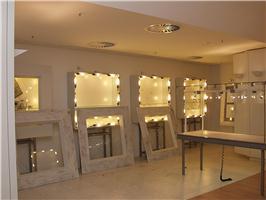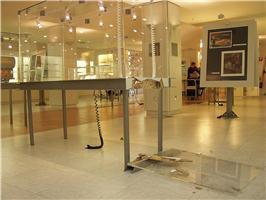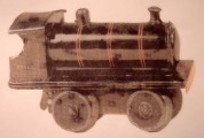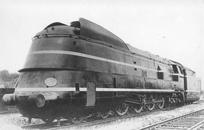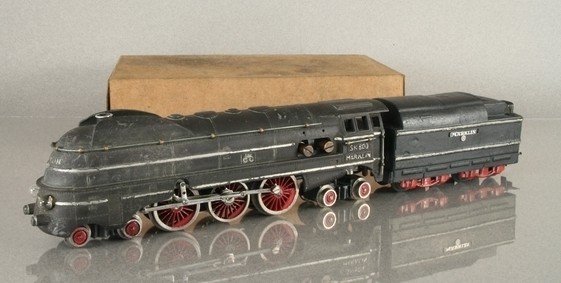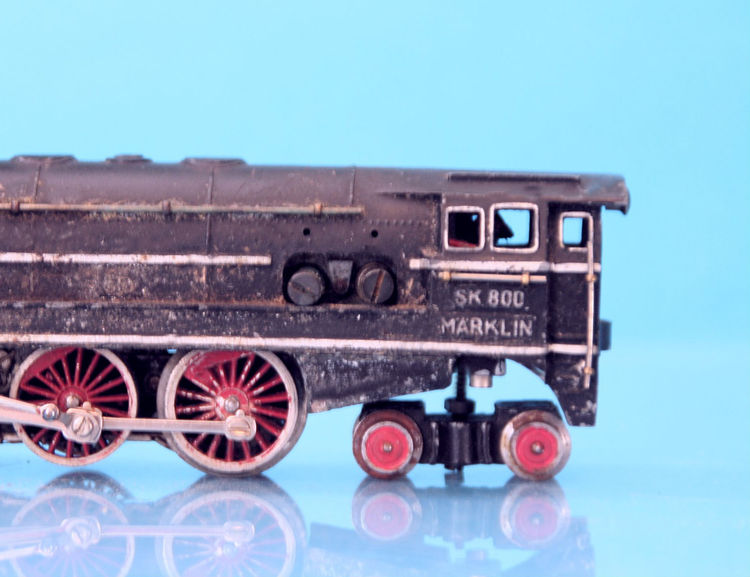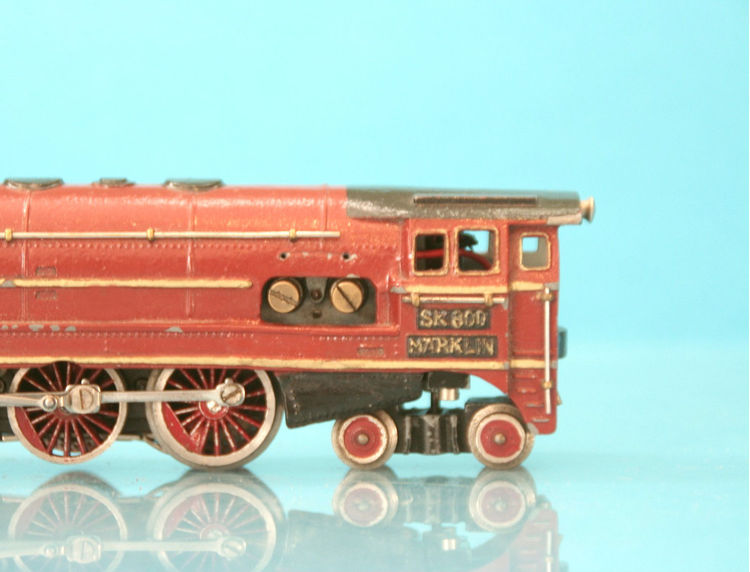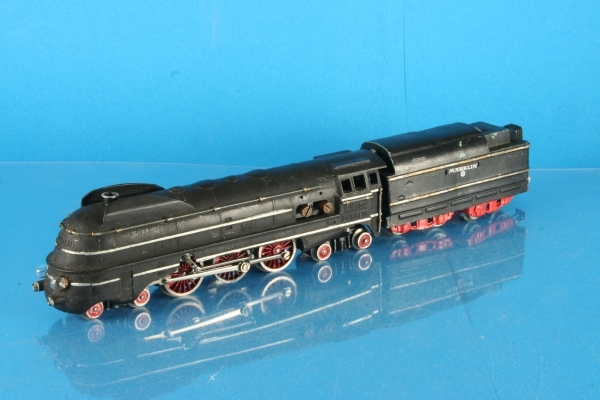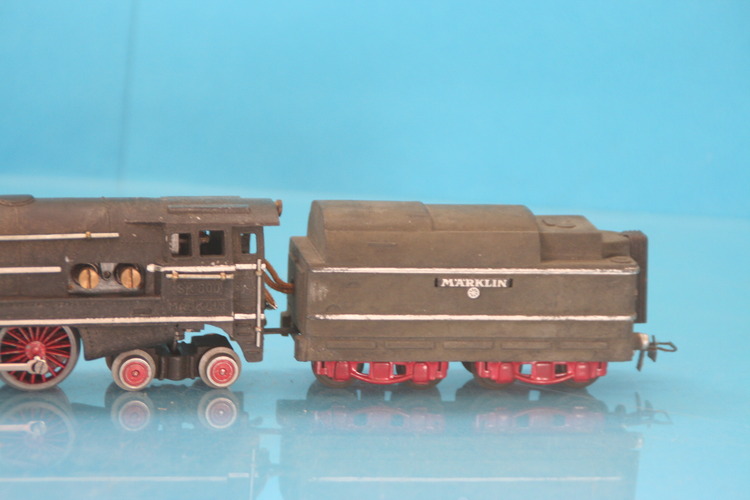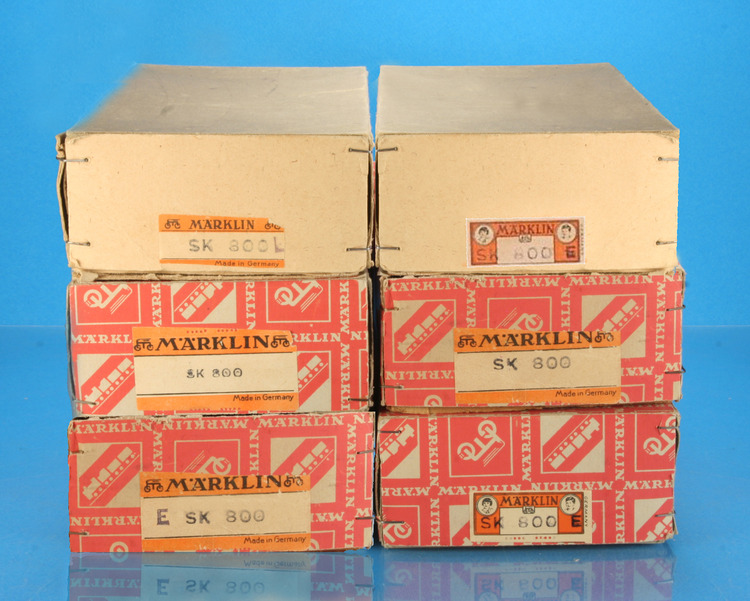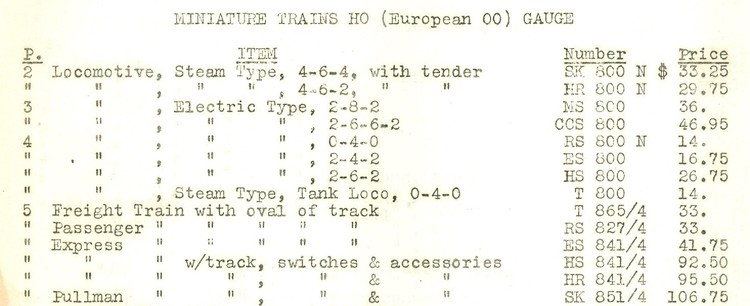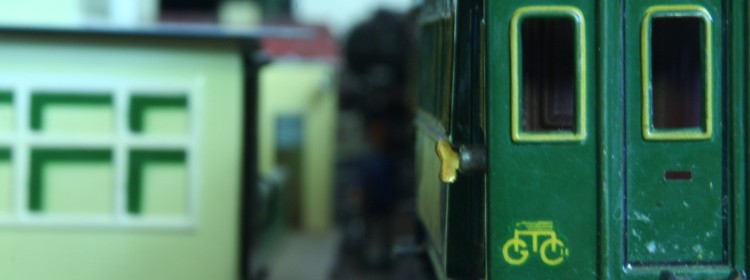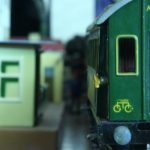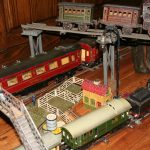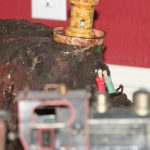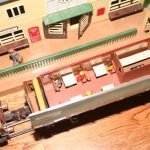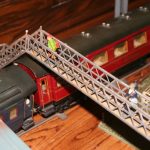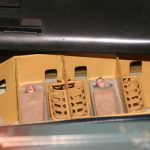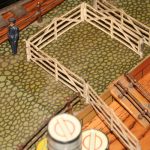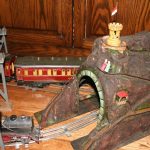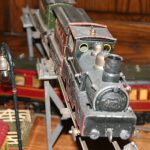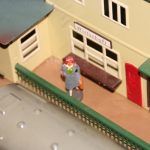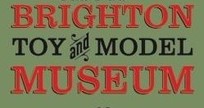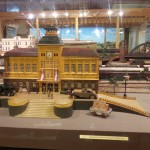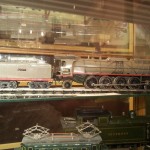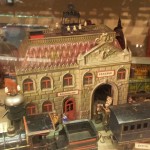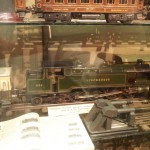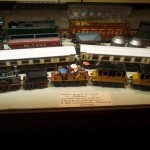Treasures in Unlawful Hands :: Marklin Museum Robbery 2005
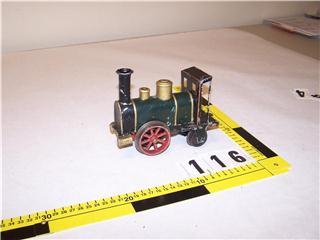
The break-in in the Märklin Museum on the night of the 17th January 18, 2005 and the theft of valuable historical items shook not only Märklin, but also the whole tin toy collector and model railway scene. Over 2 months was suggested, and wanted suspects. The outrage in the scene was clearly noticeable on open markets and auctions. Police officers and the firm itself received an unprecedented amount of help and advice from the community. The stolen goods probably did not remain in Germany. The burglars and the stolen goods her sought “salvation” in neighboring countries. However, what they did not know was that Interpol in Vienna enjoyed the products of Marklin and regarded them with high esteem. Some of the special investigators of the Vienna detectives were themselves Märklin enthusiasts. For them, the case was a personal matter and the offenders were ultimately caught.
Excerpt from the book “The Legend Lives”, Klartext Verlag, Essen (ISBN 978-3-8375-0129-2). With kind permission from the publisher.
The museum robbery in the night of the 17th on 01/18/2005.
The museum director had just taken seat at the breakfast table, with newspaper open, when the phone rang. The caller was the CEO of Marklin. That did not bode well. Very rarely he called privately at home and certainly not so early in the morning. The news was devastating and at breakfast, the newspaper was no longer conceivable to read. Despite an alarm and the busy streets, the Märklin museum in Göppingen on Holzheimer road was burgled during the night. Many questions and concerns piled up, what was missing, are the valuables still there, how much was stolen, what was damaged, is there some evidence or tracks, and so on? A short time later he was at the “crime scene.” The criminal investigation teams had already begun analyzing the crime scene, and he was offered a bad image. The scene was much worse than he had feared. The emergency exit door was damaged, display cases with glass over a centimeter thick were broken. Also on the wall with anti-theft cases, there were traces of forced entry. The complete historic Gauge I, Gauge 0, the Scale 00 from before 1945, steam engines, drive models and most tragically, the valuable ships “Auguste Victoria” and “Mecklenburg” and the extremely rare lighthouse were missing. The valuable figures of the ships, the captain of the “Auguste Victoria” was worth in good condition a 4-digit Euro sum at auction. Partially broken into fragments, a figure, a sailor, even completely, they were and gave testimony about which way the exhibits had left the premises. Clearly the burglars of the valuable pieces could not have been collectors or connoisseurs. The suspicion that the “loot” was subjected to abuse and roughly handled came on. The complete area surrounding the firm’s fence was then searched very carefully, but no more traces were found. Because of the amount of the stolen loot, with around 184 pieces missing, it was suggested that a truck would have been the getaway vehicle.
The large and very valuable steam engine and the V track cars were probably too big and bulky, they were still there, as were the large grandfather clock with dials on 4 sides and even the platinum crocodile. Their values were not recognized by the criminals. Clocks of the same design have been achieved at auctions with values over € 15,000. The Criminal Investigation secured traces on and around the crime scene. To make things worse for for the preparation and securing of fingerprints and DNA evidence of public transport was at the museum the day before. The cleaning service came every morning before opening the museum. On this day, however, in vain. The perpetrators’ tracks and traces of previous day were mixed and not clearly definable from those of visitors. By manipulating the emergency exit door, the intruders rendered it incapable of opening. This allowed the intruders to penetrate the door jamb and press the door handle down with a long, narrow tool. The door opened noiselessly. The provision for permanently illuminated emergency lighting was enough light for the bad work. As it turned out later, the burglars had disarmed the external alarm with siren and flashing light by covering it with construction foam on the flat roof of the building. The heavy metal door was in the prescribed safety class, had no handle outside and looked at the building facade does not look like a door. Nevertheless, the thieves knew exactly where they had to fix. The reconstruction of the process revealed that they researched days ahead and manipulated. The alarm system was on the weekend before going several times. Reasons were not found, so on Monday, finally on 17/01/2005 was set for the alarm system. According to the contract had to fix this order within 24 hours after the error. In this case, the 24 hours were too long a period as the service group for the alarm system came almost simultaneously with the police.
At the behest of the Judicial Police could not be immediately communicated to the burglary. Only in the afternoon from 15.00 clock could the public be informed about the dire process in knowledge. Both the criminal and the Märklin press office issued a press release. The museum director was also in personal union with a spokesman and put out the amount of damage and the number of stolen museum pieces and this was all taken up by the media “… the Marklin history was stolen … “. Particularly tragic and painful was the loss of the “stork leg,” the first locomotive of model train history. The locomotive in Cramptonbauart was not the most valuable piece, but in the presentation of the history, indispensable to the exhibit. Immediately the inventory list was compared with the remaining exhibits. The list of the stolen exhibits remained. The sheer number of the stolen exhibits was alarmingly high, 184 pieces, but even more shocking was their quality and value. Unused, almost brand-new products from the nearly 150 year history of the firm were gone. An unrecoverable part of the company’s history was simply gone. The estimation of the insurance value reach a sum of around EUR 1.7 million.
All major media were suddenly at the place of the evil happenings. Interviews were given, pictures of the stolen pieces were forwarded and there were initial suspicions and accusations. The mysterious, unknown people of the offense, was the focal point of all speculation.
Parallel to the work, the theft list was published on the company’s website on the internet. The response and participation in the circle of friends and Märklin collectors subsequently bombarded the company. Daily information came in the form of calls, letters and emails, which all had to be investigated. The director of the museum as a connoisseur of the pieces had to do every day a good part of his time to evaluate the information and disseminate it to the Criminal Investigation Department. Not only from Germany and Europe, but also evidence from the USA and Australia was received. From America, near the Canadian border, the message came from a lighthouse in the oral description of the stolen metal part corresponded almost. That was a hot track at first sight that had to be followed, even though the assumptions of technical and expert circles showed in other parts of the world. Traded highly were Eastern Europe, Spain, Italy and a client in Germany. Very disturbing was the presumption that the goods were already abroad. Nevertheless, a picture of the plate tower was requested. This picture brought clear. Not only details the whole construction of the lighthouse closed it out as belonging to the stolen loot.
Not only information came from the population, also images, slides and image CDs of previous museum visits, so that a diverse representation of the searching was possible. A particular motivation to cooperate in the investigation was the immediate reward for information leading to the seizure of the items awarded in the amount of 200,000 euros.
The robbery was the topic in all major radio stations, public broadcasters in television, with private TV channels and in all major newspapers. Even after publication breaks, notifications of the burglary were reported.
The published list of the stolen items, which was completed in the course of time more and more with pictures of the exhibits had an impact on what happened at tin toy exchanges and auctions. From an exchange dealer, it was reported that a Gauge I had a Budweiser truck in the offering, and a few days after the collapse he no longer offered it, but kept it in the reserve crate left under the table. A note on the auction seemed to be interesting. The French steam locomotive “Coup Vent” with wind cutting cab in the relatively rare movement execution in the Gauge I was also up for sale. However, a detailed comparison with the images of the stolen “coup Vent” concluded a certainly different identity. Details and signs of wear all pointed to a completely different locomotive.
Suddenly, a call to the management of the firm. The caller offered to return with payment of a certain sum, the exclusion of the police and of course absolute secrecy. Followed by several phone calls and finally access to the CID. A disappointed member of a gang of burglars, who had spoken in the run for over a possible museum burglary suspects, his cronies, to have run past him to the crime. He wanted revenge and blow the coup leave. But the suspicions were wrong, the band had nothing to do with the burglary. Therefore, during the course of the criminal investigation into the Note, to track the long-sought so-called “Harley-gang”. The theft of many Harley-Davidson motorcycles has been elucidated and arrested the thieves.
After six weeks, they met another promising call. This time from Vienna, by Interpol. Hope sprang up, because on the eve of the collapse of the CID was a police officer on a visit to the Göppingen Märklin museum, a car with license plate from Vienna. He remembered the other day after the announcement of the collapse of this car and a license plate search requests came from Göppingen to Vienna. Interpol Vienna was involved and could possibly undertake future traces and clues that might not have otherwise experienced the same classification. The car in question, whose hallmark was the difference for the search requests, happened in Göppingen and had that revealed the investigation in Vienna, absolutely nothing to do with the museum robbery.
Vienna has a large collection of tin toys, it could be said it Märklin offered. A specialist who can classify the historical pieces, was searched. A specialist and expert of the exhibits in the Märklin Museum was its director and spokesman of Märklin. He had quickly get ready and fly to Vienna. A few days after the first call, it was time. The first date was in Vienna and his presence was necessary. In fact, the first passed pieces could be unambiguously identified by him as the Märklin museum pieces. The investigation began on a large scale. In Austria alone, some 100 criminal police officers were now in use. It was under surveillance, determined observed and tracked and handover dates and handover points. With the third pick resorted to Interpol. In Austria and Germany, one of the burglars and 4 stolen, including a woman, were arrested. Unfortunately missing about 20% of the stolen goods. Among the ships, a part of the Gauge I stork leg and other valuable items. Who remained missing, until 2 days later the Italian police had arrested two people suspected of smuggling shortly before the Slovenian border. In their getaway car, a Fiesta, the remaining valuable components were found from the Märklin Museum robbery. Virtually the entire collection was taken back. The tragedy was the condition of the individual parts. They were partially scratched, deformed sheet metal parts and details canceled. A loss of about 350,000 Euro was mourned. But Marklin had “his story again” and an end time “of the empty display cases” of the museum was to be expected. A few weeks after the solution of the case and the forensic seized in Vienna parts were returned by police escort to the Märklin Museum. The confiscated items required in Italy for almost a year until his return. The two arrested burglars were delivered only after one year from Italy. The trial of the burglars was therefore shared by the District Court of Ulm in two negotiations. The main perpetrator received about 6.5 years, the next about 4.5 years and the lack of evidence for the third ended in a sentence of probation for receiving stolen goods.
[nggallery id=31]
Reference
The article text and photos have been used with special permission from the original German article and website:http://www.roland-gaugele.de/der-maerklin-museumsraub.html

